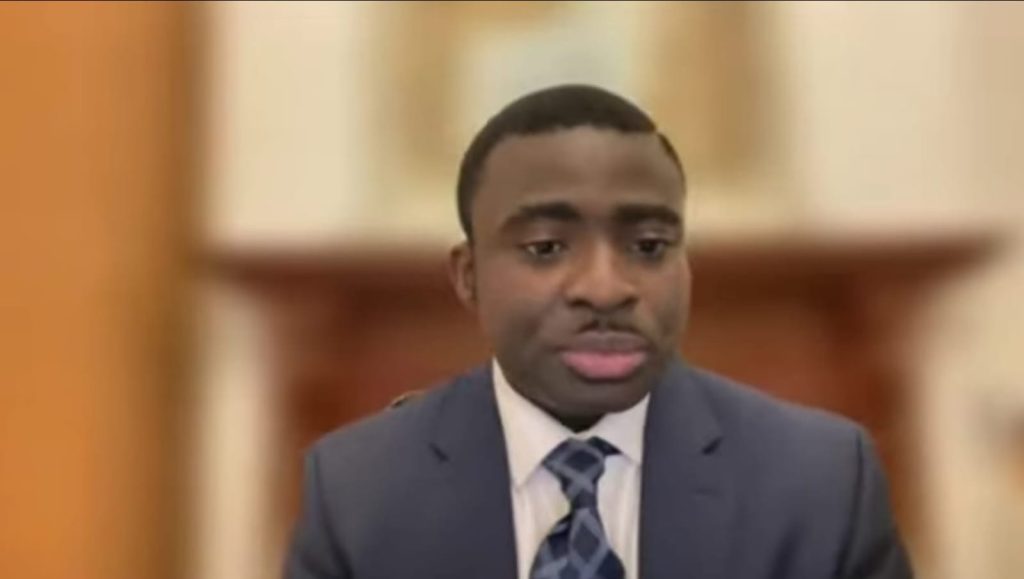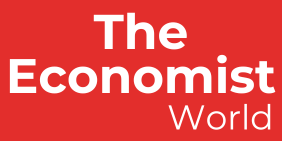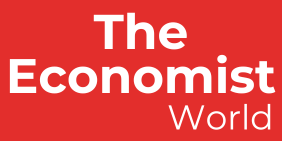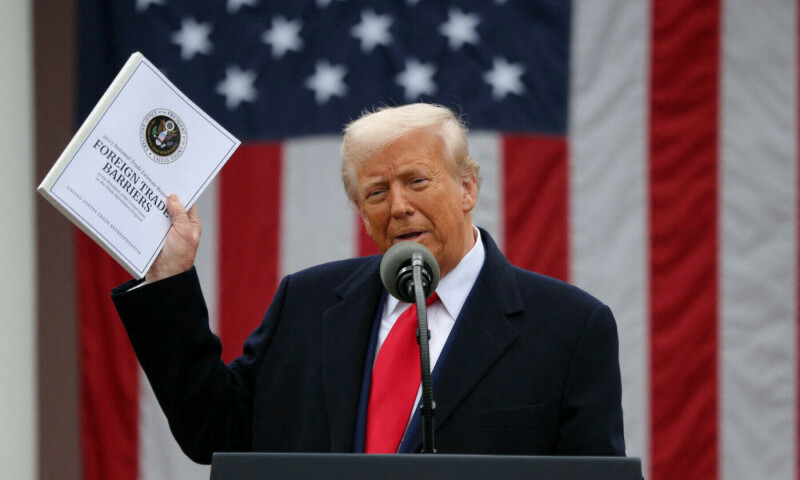Edwin Capps – World Economy – As global economies wrestle with mounting trade and tariff tensions, economic instability, and an unprecedented rise in debt—currently exceeding $315 trillion according to 2024 CNBC report—the world is urgently seeking transformative solutions to prevent financial collapse and promote sustainable growth. The World Subnationals and Nations (WSANDN) proffers solutions to global tariff war with Economic Growth Capital Resource(EGCR) which might just be the key to ending these crises.

On Thursday, April 10, 2025, WSANDN will host a closed-door Global Economic Roundtable, inviting representatives from 180 nations. As at the time of reporting, we confirmed representatives from India, Bangladesh, United Kingdom, South Africa, Australia, China, Russia, Canada, Vietnam, Saudi Arabia, and 128 other nations. Many of these nations are grappling with the recent reciprocal tariffs imposed by the United States’ President Donald Trump, as WSANDN privately announced the solutions to global tariff war.
This exclusive gathering will delve into solutions for economic growth, poverty eradication, and the stabilization of national and global economies. The meeting follows the release of a detailed whitepaper on March 19, 2025, outlining the potential of the Economic Growth Capital Resource (EGCR)—an innovative framework set to revolutionize the global economic system.
The EGCR: A Global Solution to Economic and Trade Instability
The WSANDN’s solution to the global tariff war and economic instability is the Economic Growth Capital Resource (EGCR) which is powered by JUVIDOE blockchain and advanced artificial intelligence (AI) technology. Economic Growth Capital Resource or EGCR as it is popularly known, is not a cryptocurrency, but rather a decentralized, globally trusted resource that serves as an economic powerhouse.
It integrates both blockchain and AI to create a transparent, secure, and efficient way to distribute resources, reduce poverty, and promote economic growth.
In a recent event, Dr. Dominion V. Judah, the President General of WSANDN, publicly declared the Poverty Reduction Index (PRI) as the new matrix for measuring economic growth. Through this PRI matrix and EGCR initiative, the Organization aims to achieve their mission to eradicate global poverty by 2030, aligning with the UN’s Sustainable Development Goals.
Unlike traditional financial systems, EGCR is not a currency but a financial mechanism designed to complement existing currencies, stabilize local and global economies, and hedge against currency fluctuations.
EGCR’s Economic Architecture: A Better Future for All
One of the key benefits of EGCR is its ability to stimulate growth at multiple levels—global, national, and subnational. It is a viable tool aimed for promoting investment across all sectors of the economy, from infrastructure to agriculture and healthcare. It is a comprehensive framework that drives both local and global development.
Through institutions like Subnational Financial Institutions (SnFIs), Sovereign Wealth Funds (SWFs), and Sector Development Funds (SDFs), EGCR provides capital to stimulate growth in critical sectors.
At the global level, EGCR plays a vital role in facilitating cross-border investment and collaboration. Governments and international organizations can access capital for essential projects such as infrastructure, healthcare, and energy development.
The decentralized nature of EGCR ensures transparency and efficient fund allocation, making it easier for nations to collaborate on initiatives that foster economic growth and international peace.
Aside from the solutions to global tariff war, EGCR also addresses the alarming issue of global debt. As global debt continues to rise, it offers a mechanism for debt relief by providing countries with access to affordable capital, which reduces their reliance on foreign loans and stabilizes their financial systems. it also offers a viable path for nations to manage their debts while redirecting funds to critical sectors, like education, healthcare, and infrastructure, accelerating their economic growth.
A Hedge Against Currency Volatility
Unlike conventional currencies, EGCR offers a hedge against currency devaluation, inflation, and market volatility. This makes it particularly valuable in times of financial uncertainty. While EGCR units do offer transactional monetary value, they do not compete with existing currencies. Instead, they complement and stabilize them, creating a global economic safety net. It is the only asset capable of hedging and enhancing all currencies, providing a universal store of value that nations can rely on to safeguard their economies.
EGCR’s intrinsic value is another crucial factor in its global appeal. Unlike speculative assets, it is backed by a substantial supply of physical assets, securely stored and protected against technological disruptions. This ensures its reliability and acceptance as a trusted resource on the global stage, reinforcing its role as a safe and secure alternative to traditional monetary systems.
The Power of EGCR for Local Economies
On a national and subnational level, the WSANDN JUVIDOE EGCR proves invaluable for governments, businesses, and individuals alike. Local governments can harness the power of Sector Development Funds (SDFs) and Subnational Infrastructure Funds (SNIFs) to target high-potential industries like agriculture, technology, and healthcare. By directing investments into these sectors, EGCR helps create jobs, improve infrastructure, and foster innovation—driving economic resilience even in the face of external shocks.
For businesses, particularly small and medium enterprises (SMEs), EGCR opens up access to crucial financial services. Local financial institutions (SnFIs) enable these businesses to obtain credit, expand their operations, and create jobs. The economic empowerment that EGCR offers to SMEs will not only enhance the local business ecosystem but also lead to the creation of millions of jobs globally, mitigating fears around the future of work, especially in the age of AI.
Additionally, EGCR offers deposit insurance up to $2 million for individuals and $10 million for businesses, making it one of the most secure financial systems in the world. This high level of insurance, which surpasses that of major economies like the USA, Australia, and the UK, further solidifies EGCR’s status as a safe and trustworthy asset.
Global Wealth Creation and Long-Term Economic Stability
In line with its mission, EGCR aims to create at least 1 billion jobs worldwide over the next five years while unlocking over $300 trillion in global value. This bold prediction is not only achievable but essential in a world where economic inequality and poverty are major concerns. EGCR’s ability to address these challenges and foster inclusive economic growth positions it as the definitive solution for global economic development.
Dr. Judah’s visionary approach to economic growth through EGCR has the potential to boost government revenues globally, ensuring that nations are better equipped to address domestic challenges and invest in their future. Governments can leverage EGCR’s structure to stimulate growth, reduce poverty, and promote global peace—by addressing root causes of conflict, inequality, and economic instability.
Conclusion: A New Era of Global Economic Stability
The EGCR framework marks a new era in global economic development. With its innovative design and multi-layered approach to economic growth, debt relief, and currency stabilization, it promises to reshape the global economy. It is not just a financial mechanism but a comprehensive solution to the world’s most pressing economic challenges and a real asset that could bring solutions to global tariff war.
As WSANDN’s Global Economic Roundtable approaches, all eyes will be on this transformative initiative, with the hope that it will pave the way for a more prosperous, peaceful, and stable global economy. Many people believe it is a silent solution that could take the world economy by surprise with unprecedented growth potentials which has actually been estimated to surpass the $300trillion mark stipulated by the WSANDN Team.


